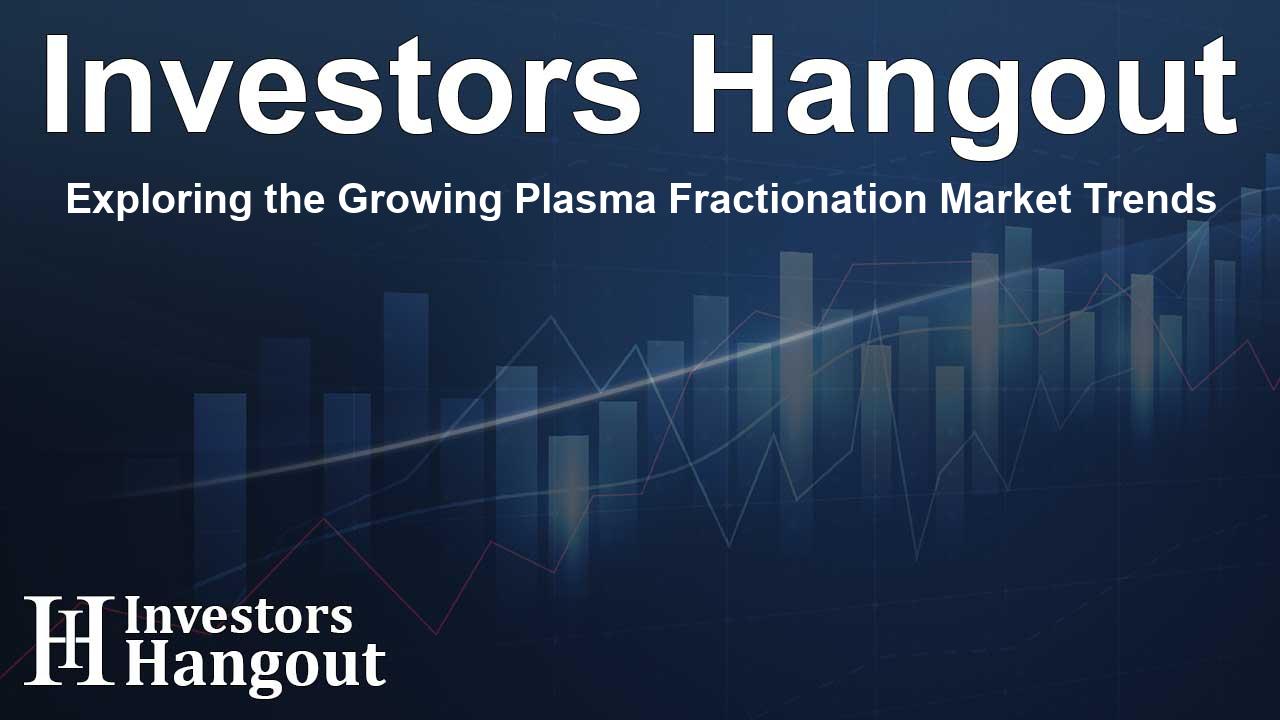Exploring the Growing Plasma Fractionation Market Trends

Growth Projections for the Plasma Fractionation Market
SkyQuest, in its latest analysis, projects that the Global Plasma Fractionation Market is on track to achieve a remarkable valuation of USD 63.27 billion by 2031, experiencing a robust compound annual growth rate (CAGR) of 8.3% during the forecast period from 2024 to 2031. One of the primary catalysts contributing to this growth is the rising number of elderly individuals globally, most of whom are susceptible to various ailments that necessitate the use of blood derivatives.
Key Drivers Fueling Market Expansion
Another significant factor driving the market's upward trajectory is the increasing utilization of immunoglobulins and alpha-1-antitrypsin across diverse medical specialties worldwide. The expansion of blood collection facilities around the globe plays a pivotal role in bolstering this market, as these facilities ensure a steady supply of plasma for fractionation purposes.
Understanding the Plasma Fractionation Process
The plasma fractionation process involves extracting various components from blood plasma, allowing for the production of essential therapeutic products. This process not only facilitates the manufacture of these blood derivatives but also caters to the rising demand for these products in healthcare globally.
Market Overview and Segment Analysis
The plasma fractionation market is poised for substantial growth across various dimensions. It is segmented by product, method, application, end use, and region. Understanding these segments is crucial for stakeholders looking to capitalize on emerging opportunities.
Product Segmentation Insights
Products within this market primarily include Albumin, Immunoglobulins (with a variety of administration routes like intravenous and subcutaneous), Coagulation Factors, and Protease Inhibitors, among others. Each category presents unique growth opportunities, particularly with regard to treating specific medical conditions.
Application Insights Favoring Market Growth
The applications for plasma fractionation are diverse, ranging from neurology to oncology and immunology. As more research highlights the effectiveness of plasma-derived therapies in treating critical conditions, the demand for these applications continues to grow.
Regional Analysis: North America Leading the Charge
North America emerges as the dominant player in the plasma fractionation market, powered by its advanced healthcare infrastructure and considerable investments in research and development. The region's high prevalence of chronic diseases requiring plasma-derived therapies further enhances its market leadership.
Challenges and Ethical Considerations
Despite the promising growth, challenges such as ethical concerns surrounding plasma collection and the risks associated with human-derived products remain pertinent. These factors could potentially hinder progress in certain markets, emphasizing the need for stringent regulatory measures.
Prominent Players and Market Dynamics
The competitive landscape of the plasma fractionation market includes several influential players like CSL Behring, Grifols, and Takeda Pharmaceutical, each contributing to the research and development of innovative therapies. The strategies of these companies significantly impact market dynamics, shaping the future of plasma-derived products.
Future Prospects and Opportunities
Looking ahead, the plasma fractionation market is poised for continued growth, driven by advances in medical science and technology. New therapeutic applications and enhanced fractionation technologies present substantial opportunities for market expansion.
Frequently Asked Questions
What is the projected market value of the plasma fractionation market by 2031?
The market is expected to reach a valuation of USD 63.27 billion by 2031.
Which factors are primarily driving the growth of the plasma fractionation market?
Key drivers include the increase in the elderly population, rising prevalence of chronic diseases, and heightened demand for plasma-derived therapeutics.
Which regions are expected to lead the plasma fractionation market?
North America is anticipated to dominate the market due to its robust healthcare infrastructure and high rates of chronic diseases.
What ethical concerns are associated with plasma collection?
Concerns include the safe and ethical sourcing of plasma, potential risks of infectious disease transmission, and the use of human-derived products.
Who are the major players in the plasma fractionation market?
Prominent players include CSL Behring, Grifols, and Takeda Pharmaceutical, among others, driving innovation and market strategies.
About Investors Hangout
Investors Hangout is a leading online stock forum for financial discussion and learning, offering a wide range of free tools and resources. It draws in traders of all levels, who exchange market knowledge, investigate trading tactics, and keep an eye on industry developments in real time. Featuring financial articles, stock message boards, quotes, charts, company profiles, and live news updates. Through cooperative learning and a wealth of informational resources, it helps users from novices creating their first portfolios to experts honing their techniques. Join Investors Hangout today: https://investorshangout.com/
Disclaimer: The content of this article is solely for general informational purposes only; it does not represent legal, financial, or investment advice. Investors Hangout does not offer financial advice; the author is not a licensed financial advisor. Consult a qualified advisor before making any financial or investment decisions based on this article. The author's interpretation of publicly available data shapes the opinions presented here; as a result, they should not be taken as advice to purchase, sell, or hold any securities mentioned or any other investments. The author does not guarantee the accuracy, completeness, or timeliness of any material, providing it "as is." Information and market conditions may change; past performance is not indicative of future outcomes. If any of the material offered here is inaccurate, please contact us for corrections.









